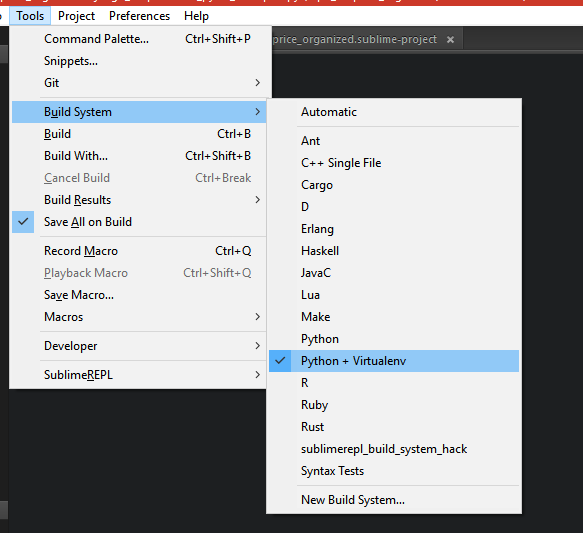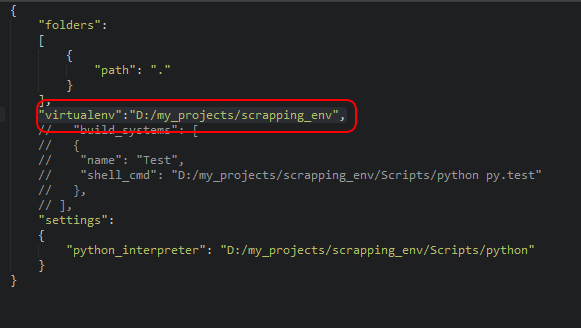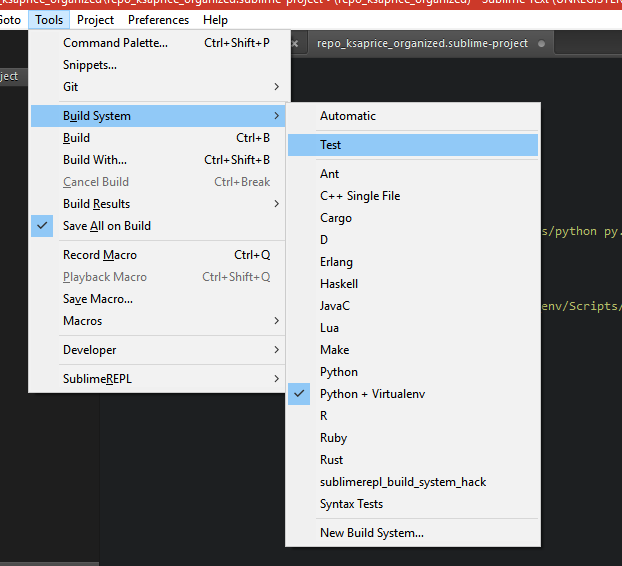I'm trying to setup ST3 to work with Python's virtualenv, running on Windows 8.1. I usually use SublimeREPL with my global Python install to run files. Now that I'm using venvs, though, I'm having trouble getting anything to run. Here's what I've been trying:
I have a parent directory with a folder virtualenvs, then one scripts for my .py files that I muck around with. I usually just navigate to \virtualenvs\venv\scripts\activate and do my work using the python interpreter, but I'd like to be able to build the files without needing to go through command line stuff, using ST3 and SublimeREPL.
I made a build system that looks like this:
{
"shell_cmd": ["\code\virtualenvs\venv\scripts\python.exe", "-u", "$file"],
"file_regex": "^[ ]*File \"(...*?)\", line ([0-9]*)",
"selector": "source.python",
}
But I'm not even sure if this is what I need to do to use SublimeREPL, as I've never had to worry about Tools > Build Systems before, just Tools > SublimeREPL > Python > Python - RUN current file.
How can I change the build system or customize SublimeREPL's RUN? For a test case, I have the requests module installed in the venv but not in my global python install. Importing it from command line works fine but a .py file with import requests returns an ImportError.




realpath couldn't resolve "/Library/Frameworks/Python.framework/Versions/3.6/bin/python"I also tried to set package settings > virtualenv > user and specify directory of my local folder virtualenv (named venv3) but keep having error that cannot locate the interpreter. Could you help so I avoid ask duplicate questions? – Rivalry